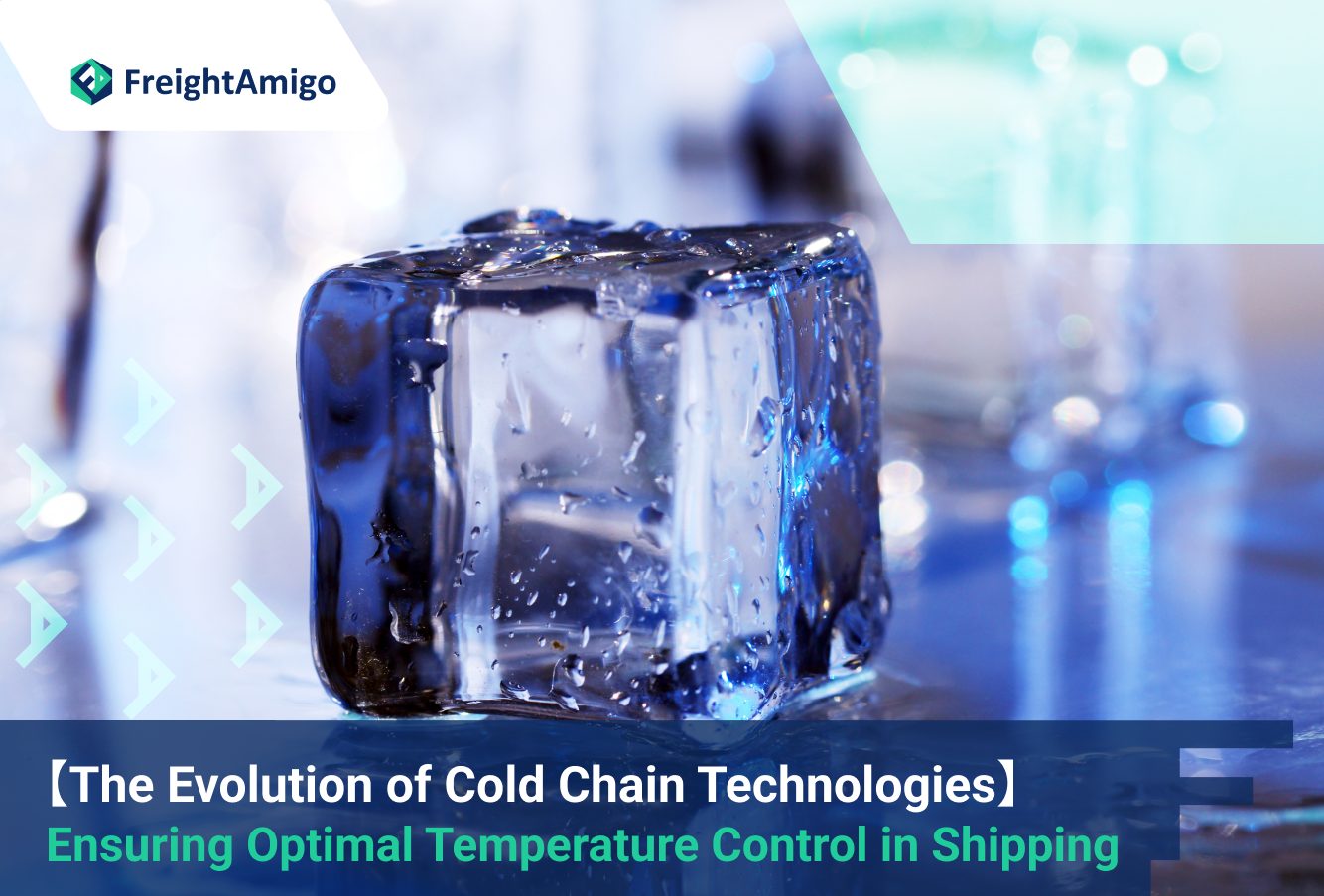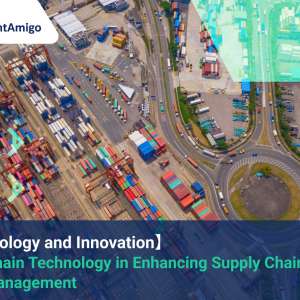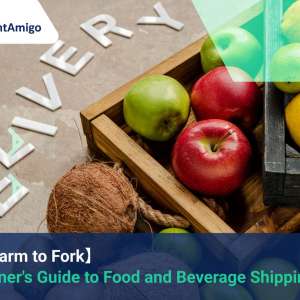February 5th, 2024: Maya Wong– Marketing Analyst at FreightAmigo
In today’s global marketplace, temperature-controlled shipping plays a vital role in ensuring the quality and safety of perishable goods during transit. Whether it’s fresh produce, pharmaceuticals, or delicate artworks, maintaining optimal temperatures throughout the shipping process is crucial to preserving the integrity of these sensitive products. Cold chain technologies have revolutionized the way temperature-controlled shipping is conducted, providing innovative solutions to meet the demands of various industries. In this article, we will explore the evolution of cold chain technologies, the importance of temperature control in shipping, and the advancements that have transformed the industry.
Want to compare the best Express, Air Freight, Sea Freight, Rail Freight & Trucking rates or even Cold Chain so as to have better control on cost?
The Significance of Temperature Control in Shipping
Ensuring Product Quality and Safety
When it comes to perishable goods, such as food and pharmaceuticals, maintaining the right temperature is essential to preserve their quality, safety, and efficacy. Deviations from the optimal temperature range can lead to spoilage, degradation, or even render the products ineffective. For example, vaccines can lose their potency if exposed to temperatures outside the recommended range, compromising their effectiveness in preventing diseases. Similarly, fresh produce can quickly deteriorate if not transported under controlled temperature conditions, resulting in financial losses for farmers and suppliers.
Meeting Regulatory Standards and Guidelines
Various industries have established specific temperature control standards and guidelines to ensure the safety and quality of their products during shipping. These standards are set by regulatory bodies and organizations such as the Food and Drug Administration (FDA) and the World Health Organization (WHO). Adhering to these standards is not only crucial for compliance but also demonstrates a commitment to delivering products that meet the highest quality and safety standards.
Protecting Brand Reputation and Customer Satisfaction
In today’s competitive market, maintaining brand reputation and customer satisfaction is paramount. Customers expect to receive products in optimal condition, especially when it comes to perishable goods. Temperature-controlled shipping helps businesses deliver on their promises, ensuring that products arrive fresh, safe, and ready for consumption. By investing in cold chain technologies, companies can enhance their brand reputation and build trust with their customers, leading to increased customer loyalty and repeat business.
The Evolution of Cold Chain Technologies
Traditional Methods of Temperature Control
In the past, temperature control during shipping relied heavily on traditional methods such as ice, coolers, and refrigerated trucks. While these methods provided some level of temperature regulation, they were often limited in their effectiveness and efficiency. Manual monitoring and adjustments were required, making it challenging to maintain a consistent temperature throughout the entire shipping process. Additionally, these traditional methods were prone to human error and often lacked real-time visibility into temperature conditions.
Emergence of Advanced Temperature Monitoring Systems
With advancements in technology, cold chain logistics underwent a significant transformation. The emergence of advanced temperature monitoring systems revolutionized the industry, providing real-time visibility and control over temperature conditions during shipping. These systems utilize sensors, data loggers, and wireless connectivity to monitor and record temperature data at various points along the supply chain. This data can be accessed remotely, allowing for proactive temperature management and immediate response to any deviations from the desired temperature range.
Integration of IoT and Cloud-Based Solutions
The Internet of Things (IoT) and cloud-based solutions have further enhanced the capabilities of cold chain technologies. IoT-enabled devices, such as temperature sensors and trackers, can be easily integrated into shipping containers, trucks, and warehouses, providing continuous temperature monitoring and data collection. This data is then transmitted to cloud-based platforms, where it can be analyzed, visualized, and shared in real-time. Leveraging IoT and cloud-based solutions enables stakeholders to make data-driven decisions, optimize shipping routes, and ensure compliance with temperature control regulations.
Automation and Artificial Intelligence
Automation and artificial intelligence (AI) have also played a significant role in the evolution of cold chain technologies. AI algorithms can analyze vast amounts of temperature data, identify patterns, and make predictive recommendations to optimize temperature control during shipping. Automated systems can adjust cooling or heating mechanisms based on real-time data, minimizing human intervention and reducing the risk of errors. These advancements not only enhance efficiency but also improve the accuracy and reliability of temperature control, ensuring that products remain within the desired temperature range throughout the entire shipping process.
Blockchain Technology for Transparency and Traceability
Blockchain technology is revolutionizing the transparency and traceability of temperature-controlled shipping. By recording temperature data and other relevant information on a decentralized and immutable ledger, blockchain provides a secure and transparent record of a product’s journey from the point of origin to the final destination. This technology enables stakeholders to track and verify temperature conditions, ensuring compliance with temperature control guidelines and providing customers with confidence in the integrity of the products they receive.
Cold Chain Technologies in Action: Solutions for Effective Temperature Control
Refrigerated Containers and Trucks
Refrigerated containers, also known as reefer containers, and refrigerated trucks are the backbone of temperature-controlled shipping. These specialized containers and vehicles are equipped with advanced cooling systems, insulation, and temperature monitoring devices to maintain a consistent temperature throughout the shipping process. They provide a controlled environment for perishable goods, protecting them from temperature fluctuations and external conditions.
Temperature-Controlled Packaging
Temperature-controlled packaging plays a crucial role in maintaining the desired temperature range for sensitive products. These packaging solutions are designed to provide insulation and regulate heat transfer, minimizing temperature fluctuations during shipping. Materials such as expanded polystyrene (EPS), vacuum-insulated panels (VIPs), and phase change materials (PCMs) are commonly used in temperature-controlled packaging to ensure optimal temperature control.
Cold Storage Facilities
Cold storage facilities, also known as cold warehouses or refrigerated warehouses, are essential components of the cold chain infrastructure. These facilities provide controlled environments with precise temperature and humidity control to store and manage perishable goods. Cold storage facilities are equipped with advanced refrigeration systems, temperature monitoring devices, and backup power systems to ensure uninterrupted temperature control.
Temperature Monitoring and Control Systems
Temperature monitoring and control systems are critical for maintaining the desired temperature range during shipping. These systems utilize sensors, data loggers, and real-time monitoring devices to track temperature conditions in real-time. Automated controls can adjust cooling or heating mechanisms based on temperature deviations, ensuring that products remain within the specified temperature range.
Data Analytics and Predictive Modeling
Data analytics and predictive modeling have become integral parts of temperature-controlled shipping. By analyzing historical temperature data and other relevant factors, these technologies can predict temperature fluctuations, identify potential risks, and optimize temperature control strategies. This data-driven approach enables stakeholders to make informed decisions, minimize waste, and improve overall operational efficiency.
Cold Chain Visibility and Transparency Solutions
Cold chain visibility and transparency solutions provide stakeholders with real-time insights into the temperature conditions and location of products throughout the shipping process. These solutions leverage IoT sensors, GPS tracking, and cloud-based platforms to provide end-to-end visibility, allowing stakeholders to monitor temperature conditions, track shipments, and ensure compliance with temperature control regulations.
Conclusion
Cold chain technologies have revolutionized the way temperature-controlled shipping is conducted, providing innovative solutions to ensure the quality, safety, and efficacy of perishable goods during transit. From advanced temperature monitoring systems to automation, AI, and blockchain technology, these advancements have transformed the industry, enabling stakeholders to maintain optimal temperature conditions throughout the shipping process. By leveraging cold chain technologies, businesses can enhance their brand reputation, meet regulatory standards, and deliver products that meet the highest quality and safety requirements. As the demand for temperature-controlled shipping continues to grow, the evolution of cold chain technologies will play a crucial role in meeting the challenges of a globalized and interconnected world.
There are different options for cargo transportation. If you want to choose the most convenient and suitable solution, it is best to have the full support of logistics experts! If you are planning to ship goods overseas with cold chain, please go to the FreightAmigo page for inquiries.
Read More:
How to Ship Food Safely and Efficiently
【Delivering Freshness】 The Importance of Food Packaging for Shipping
【From Farm to Fork】 A Beginner’s Guide to Food and Beverage Shipping
【Perfect Food Shipping Company】Choosing the Right Partner for Your Delicious Products
If you have any inquiries on logistics/supply chain, feel free to contact FreightAmigo now:
Chat with us online | Hotline: +852 28121686 | WhatsApp: +852 27467829









































